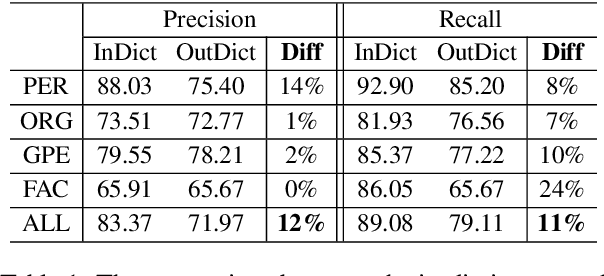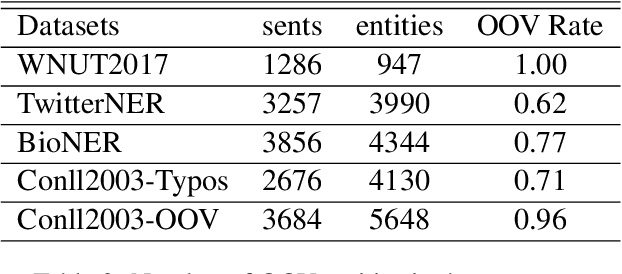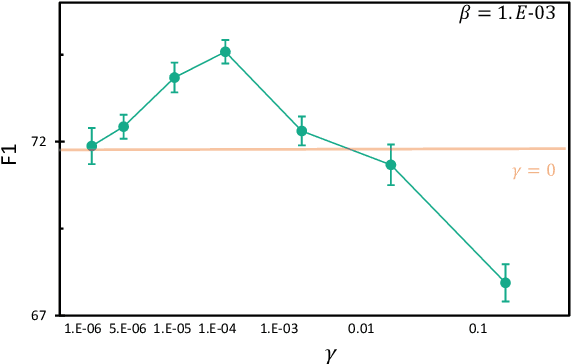Limao Xiong
Multi-Programming Language Sandbox for LLMs
Oct 30, 2024



Abstract:We introduce MPLSandbox, an out-of-the-box multi-programming language sandbox designed to provide unified and comprehensive feedback from compiler and analysis tools for Large Language Models (LLMs). It can automatically identify the programming language of the code, compiling and executing it within an isolated sub-sandbox to ensure safety and stability. In addition, MPLSandbox also integrates both traditional and LLM-based code analysis tools, providing a comprehensive analysis of generated code. MPLSandbox can be effortlessly integrated into the training and deployment of LLMs to improve the quality and correctness of their generated code. It also helps researchers streamline their workflows for various LLM-based code-related tasks, reducing the development cost. To validate the effectiveness of MPLSandbox, we integrate it into training and deployment approaches, and also employ it to optimize workflows for a wide range of real-world code-related tasks. Our goal is to enhance researcher productivity on LLM-based code-related tasks by simplifying and automating workflows through delegation to MPLSandbox.
RMB: Comprehensively Benchmarking Reward Models in LLM Alignment
Oct 13, 2024



Abstract:Reward models (RMs) guide the alignment of large language models (LLMs), steering them toward behaviors preferred by humans. Evaluating RMs is the key to better aligning LLMs. However, the current evaluation of RMs may not directly correspond to their alignment performance due to the limited distribution of evaluation data and evaluation methods that are not closely related to alignment objectives. To address these limitations, we propose RMB, a comprehensive RM benchmark that covers over 49 real-world scenarios and includes both pairwise and Best-of-N (BoN) evaluations to better reflect the effectiveness of RMs in guiding alignment optimization. We demonstrate a positive correlation between our benchmark and the downstream alignment task performance. Based on our benchmark, we conduct extensive analysis on the state-of-the-art RMs, revealing their generalization defects that were not discovered by previous benchmarks, and highlighting the potential of generative RMs. Furthermore, we delve into open questions in reward models, specifically examining the effectiveness of majority voting for the evaluation of reward models and analyzing the impact factors of generative RMs, including the influence of evaluation criteria and instructing methods. Our evaluation code and datasets are available at https://github.com/Zhou-Zoey/RMB-Reward-Model-Benchmark.
MetaRM: Shifted Distributions Alignment via Meta-Learning
May 01, 2024Abstract:The success of Reinforcement Learning from Human Feedback (RLHF) in language model alignment is critically dependent on the capability of the reward model (RM). However, as the training process progresses, the output distribution of the policy model shifts, leading to the RM's reduced ability to distinguish between responses. This issue is further compounded when the RM, trained on a specific data distribution, struggles to generalize to examples outside of that distribution. These two issues can be united as a challenge posed by the shifted distribution of the environment. To surmount this challenge, we introduce MetaRM, a method leveraging meta-learning to align the RM with the shifted environment distribution. MetaRM is designed to train the RM by minimizing data loss, particularly for data that can improve the differentiation ability to examples of the shifted target distribution. Extensive experiments demonstrate that MetaRM significantly improves the RM's distinguishing ability in iterative RLHF optimization, and also provides the capacity to identify subtle differences in out-of-distribution samples.
EasyJailbreak: A Unified Framework for Jailbreaking Large Language Models
Mar 18, 2024Abstract:Jailbreak attacks are crucial for identifying and mitigating the security vulnerabilities of Large Language Models (LLMs). They are designed to bypass safeguards and elicit prohibited outputs. However, due to significant differences among various jailbreak methods, there is no standard implementation framework available for the community, which limits comprehensive security evaluations. This paper introduces EasyJailbreak, a unified framework simplifying the construction and evaluation of jailbreak attacks against LLMs. It builds jailbreak attacks using four components: Selector, Mutator, Constraint, and Evaluator. This modular framework enables researchers to easily construct attacks from combinations of novel and existing components. So far, EasyJailbreak supports 11 distinct jailbreak methods and facilitates the security validation of a broad spectrum of LLMs. Our validation across 10 distinct LLMs reveals a significant vulnerability, with an average breach probability of 60% under various jailbreaking attacks. Notably, even advanced models like GPT-3.5-Turbo and GPT-4 exhibit average Attack Success Rates (ASR) of 57% and 33%, respectively. We have released a wealth of resources for researchers, including a web platform, PyPI published package, screencast video, and experimental outputs.
StepCoder: Improve Code Generation with Reinforcement Learning from Compiler Feedback
Feb 05, 2024



Abstract:The advancement of large language models (LLMs) has significantly propelled the field of code generation. Previous work integrated reinforcement learning (RL) with compiler feedback for exploring the output space of LLMs to enhance code generation quality. However, the lengthy code generated by LLMs in response to complex human requirements makes RL exploration a challenge. Also, since the unit tests may not cover the complicated code, optimizing LLMs by using these unexecuted code snippets is ineffective. To tackle these challenges, we introduce StepCoder, a novel RL framework for code generation, consisting of two main components: CCCS addresses the exploration challenge by breaking the long sequences code generation task into a Curriculum of Code Completion Subtasks, while FGO only optimizes the model by masking the unexecuted code segments to provide Fine-Grained Optimization. In addition, we furthermore construct the APPS+ dataset for RL training, which is manually verified to ensure the correctness of unit tests. Experimental results show that our method improves the ability to explore the output space and outperforms state-of-the-art approaches in corresponding benchmarks. Our dataset APPS+ and StepCoder are available online.
The Rise and Potential of Large Language Model Based Agents: A Survey
Sep 19, 2023



Abstract:For a long time, humanity has pursued artificial intelligence (AI) equivalent to or surpassing the human level, with AI agents considered a promising vehicle for this pursuit. AI agents are artificial entities that sense their environment, make decisions, and take actions. Many efforts have been made to develop intelligent agents, but they mainly focus on advancement in algorithms or training strategies to enhance specific capabilities or performance on particular tasks. Actually, what the community lacks is a general and powerful model to serve as a starting point for designing AI agents that can adapt to diverse scenarios. Due to the versatile capabilities they demonstrate, large language models (LLMs) are regarded as potential sparks for Artificial General Intelligence (AGI), offering hope for building general AI agents. Many researchers have leveraged LLMs as the foundation to build AI agents and have achieved significant progress. In this paper, we perform a comprehensive survey on LLM-based agents. We start by tracing the concept of agents from its philosophical origins to its development in AI, and explain why LLMs are suitable foundations for agents. Building upon this, we present a general framework for LLM-based agents, comprising three main components: brain, perception, and action, and the framework can be tailored for different applications. Subsequently, we explore the extensive applications of LLM-based agents in three aspects: single-agent scenarios, multi-agent scenarios, and human-agent cooperation. Following this, we delve into agent societies, exploring the behavior and personality of LLM-based agents, the social phenomena that emerge from an agent society, and the insights they offer for human society. Finally, we discuss several key topics and open problems within the field. A repository for the related papers at https://github.com/WooooDyy/LLM-Agent-Paper-List.
Secrets of RLHF in Large Language Models Part I: PPO
Jul 18, 2023Abstract:Large language models (LLMs) have formulated a blueprint for the advancement of artificial general intelligence. Its primary objective is to function as a human-centric (helpful, honest, and harmless) assistant. Alignment with humans assumes paramount significance, and reinforcement learning with human feedback (RLHF) emerges as the pivotal technological paradigm underpinning this pursuit. Current technical routes usually include \textbf{reward models} to measure human preferences, \textbf{Proximal Policy Optimization} (PPO) to optimize policy model outputs, and \textbf{process supervision} to improve step-by-step reasoning capabilities. However, due to the challenges of reward design, environment interaction, and agent training, coupled with huge trial and error cost of large language models, there is a significant barrier for AI researchers to motivate the development of technical alignment and safe landing of LLMs. The stable training of RLHF has still been a puzzle. In the first report, we dissect the framework of RLHF, re-evaluate the inner workings of PPO, and explore how the parts comprising PPO algorithms impact policy agent training. We identify policy constraints being the key factor for the effective implementation of the PPO algorithm. Therefore, we explore the PPO-max, an advanced version of PPO algorithm, to efficiently improve the training stability of the policy model. Based on our main results, we perform a comprehensive analysis of RLHF abilities compared with SFT models and ChatGPT. The absence of open-source implementations has posed significant challenges to the investigation of LLMs alignment. Therefore, we are eager to release technical reports, reward models and PPO codes, aiming to make modest contributions to the advancement of LLMs.
A Confidence-based Partial Label Learning Model for Crowd-Annotated Named Entity Recognition
May 21, 2023Abstract:Existing models for named entity recognition (NER) are mainly based on large-scale labeled datasets, which always obtain using crowdsourcing. However, it is hard to obtain a unified and correct label via majority voting from multiple annotators for NER due to the large labeling space and complexity of this task. To address this problem, we aim to utilize the original multi-annotator labels directly. Particularly, we propose a Confidence-based Partial Label Learning (CPLL) method to integrate the prior confidence (given by annotators) and posterior confidences (learned by models) for crowd-annotated NER. This model learns a token- and content-dependent confidence via an Expectation-Maximization (EM) algorithm by minimizing empirical risk. The true posterior estimator and confidence estimator perform iteratively to update the true posterior and confidence respectively. We conduct extensive experimental results on both real-world and synthetic datasets, which show that our model can improve performance effectively compared with strong baselines.
MINER: Improving Out-of-Vocabulary Named Entity Recognition from an Information Theoretic Perspective
Apr 09, 2022



Abstract:NER model has achieved promising performance on standard NER benchmarks. However, recent studies show that previous approaches may over-rely on entity mention information, resulting in poor performance on out-of-vocabulary (OOV) entity recognition. In this work, we propose MINER, a novel NER learning framework, to remedy this issue from an information-theoretic perspective. The proposed approach contains two mutual information-based training objectives: i) generalizing information maximization, which enhances representation via deep understanding of context and entity surface forms; ii) superfluous information minimization, which discourages representation from rote memorizing entity names or exploiting biased cues in data. Experiments on various settings and datasets demonstrate that it achieves better performance in predicting OOV entities.
 Add to Chrome
Add to Chrome Add to Firefox
Add to Firefox Add to Edge
Add to Edge